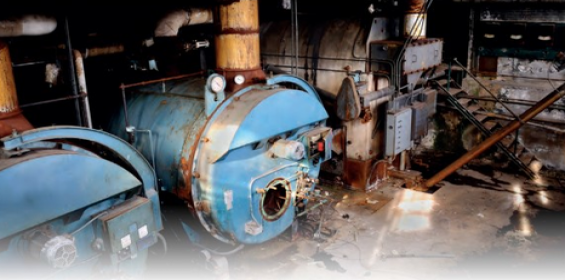Technical boiler house risk assessments in focus
Published: 19 February, 2021
PWE takes a look at technical boiler house risk assessments, from their legalities to the potential savings that can be achieved.
It is strongly advised that all companies with a steam boiler have a technical risk assessment in place for its boilers and boiler house. It is required by law under the Management of Health & Safety at Work Regulations 1999 and is necessary to comply with the requirements of SAFed document BG01, HSE INDG 436 and HSE INDG 417 Rev1, under which steam or hot water plant should be operated.
Why do you need a Technical Boiler House Risk Assessment?
Besides the legal requirement, a faulty steam boiler brings with it the risk of a steam explosion. With significant stored energy, failure of steam (or pressurised hot water boiler plant) can produce a similar level of destruction and/or devastation as a bomb, potentially causing catastrophic damage, serious injury and possibly multiple fatalities. With around 100 pressure vessel failures and at least one fatality per annum in the UK (HSE RIDDOR 2014), the importance of a technical boiler house risk assessment (TBHRA) cannot be overstated.
So, a TBHRA is therefore essential for owners, operators and managers to ensure that staff are aware of the risks and their responsibilities for the safe operation and management of industrial steam and hot water boiler plant. It is also likely to be the first thing a HSE inspector would ask to see in the event of an inspection.
A TBHRA is also a vital link in the safety chain to identify risk and develop measures to mitigate those risks, thus ensuring the safety of all involved with the plant. We simply cannot stress the importance of the TBHRA enough, because non-compliance with the law can result in substantial fines and the likelihood of a custodial sentence in the event of serious injury or a fatality.
TBHRAs
There are potentially different methods of fulfilling the TBHRA requirement, for example, Fulton’s aftercare and business development manager Jeff Byrne explains that his company’s method with the TBHRA requirement is to take a very collaborative approach with its clients; and use only experienced steam boiler and steam system engineers with over 60 years’ knowledge of not just steam boilers, but steam, water and condensate systems.
He explains that highly-experienced engineers will scrutinise and photograph every area of risk and will produce a full report proposing and prioritising mitigation measures. This will give owners, operators and managers peace of mind that their plant may be operated safely and that all relevant guidance and legislation is supported once any identified hazards are rectified.
What are the typical findings of a TBHRA?
Unlike a vehicle MOT, a TBHRA does not pass or fail a steam system, but instead highlights hazards and the potential risk and then proposes measures to rectify any issues. According to INDG 436 “a risk assessment does not need to include excessive detail”, butissues highlighted can include boiler specification, location, operation and condition, poor record keeping, lack of suitable/relevant training or trained operator absence cover, shortage of plant drawings and manuals, control system reliability, ventilation issues, poor/no suitable operational procedures, water quality issues, etc.
Beyond the TBHRA
Byrne emphasised that once its assessment is completed and delivered, there is no commitment by the customer to involve his company in any post-assessment remedial works. But the document does highlight areas of the steam system that require attention and will prioritise the risk they pose from high priority (red) to lower priority (green). The assessment must also be made available to the boiler operator and, in the event of the sale of equipment, the new owner/operator.
However, unlike a MOT, a TBHRA is a live document that should be updated on an ongoing basis when any changes or modifications affecting the operation of a boiler occurs. This can include personnel changes, additional training, physical changes including boiler/burner upgrades, legislation amendments, etc.
Byrne added that Fulton can offer support to the customer once the TBHRA has been completed, or during or after the annual review. This support can be provided onsite or via telephone or video conference assistance once the review is completed.
A TBHRA also offers excellent value for money because it not only highlights areas of potential risk for owners, operators and managers, but can also identify where enhancements to the steam system could lead to improved energy efficiency.
For example, the cost to replace an old, inefficient or dangerous burner could easily be offset within a few years by the fuel savings achieved through the upgrade.
For further information please visit: www.fulton.co.uk
https://www.linkedin.com/company/fulton-boiler-works-gb-limited/







